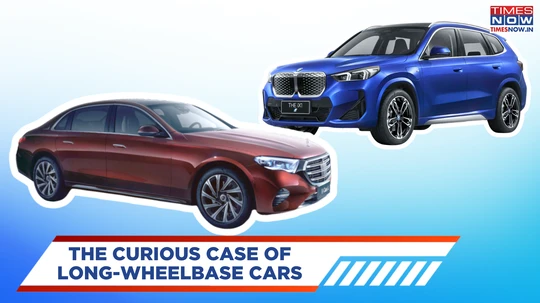Long-wheelbase versions of luxury sedans have been a trend that has grown in the segment, but not completely understood by all fans and enthusiasts.
This is mainly because a long-wheelbase version of a high-end sedan emphasizes its comfort and luxury more than its tech and performance. In comparison, performance often sounds more exciting than comfort, but carmakers are not purely driven by emotion, unlike enthusiasts. They are a car business that needs to sell more vehicles and the sales data clearly shows what actual customers of these luxury brands prefer to pay for.
1. The Long-Wheelbase Shift:
The shift towards long-wheelbase cars started in 2017, when Mercedes-Benz first introduced the W213 E-Class LWB specifically for the Indian market. While the brand was questioned on its decision to move from the standard E-Class to the longer version, the idea behind the strategy soon proved Mercedes-Benz’s strategy to be well-founded.
Based on their experience in the Chinese market and research in India, Mercedes-Benz concluded that 80 percent of E-Class customers are chauffeur-driven in the country, which meant that comfort and space at the rear were more important than the front. With its 134mm of added leg room, reclining second-row seats and ‘boss-mode’ to free up more space by pushing the front passenger seat, the E-Class set a new benchmark in comfort tailored for the owners.
The E-Class LWB quickly became a best-selling model once again, accounting for 34 percent of overall sales in the year 2017 and leaving competitors in the rear view.
2. The Long-Wheelbase Trend Begins:
After following the W213 E-Class LWB’s success, competitors such as BMW India had to respond and their answer came in the form of the BMW 3 Series Gran Limousine, which was launched in January 2021. The comfort-focused 3-series was 110mm longer, offered more legroom at the rear and was based on the G28 platform.
Focused on the Indian and Chinese market, focused on chauffeur customers, the strategy proved to be a hit amongst BMW India customers as well. Since 2021, BMW has now extended its long-wheelbase range into a portfolio of four cars, namely the 7 Series, 5 Series, 3 Series and the all-new iX1 LWB SUV.
3. Customer Always Wins:
While fans and enthusiasts of luxury brands may not agree with traditional models going the long-wheelbase route, the numbers clearly show a different story. In 2025, Mercedes-Benz India recorded their highest-ever monthly sales in September with over 2,500 cars sold. Out of these cars, the new E-Class LWB was the highest-selling model with a 47 percent year-over-year growth margin.
BMW India, on the other hand, saw a massive 169 percent year-over-year growth in its long-wheelbase portfolio by selling 5,720 LWB cars between January to September 2025. The 3 series LWB is BMW’s highest-selling sedan with 16 percent share and overall, the brand has sold over 15,000 long-wheelbase cars since 2021.
The numbers clearly show that the Indian luxury car buyer likes to be driven around in full comfort and sedans with extra legroom are the ones that gain preference. Competitors who failed to jump on the long-wheelbase bandwagon in time are currently facing lower demand and the numbers are here to prove it.
